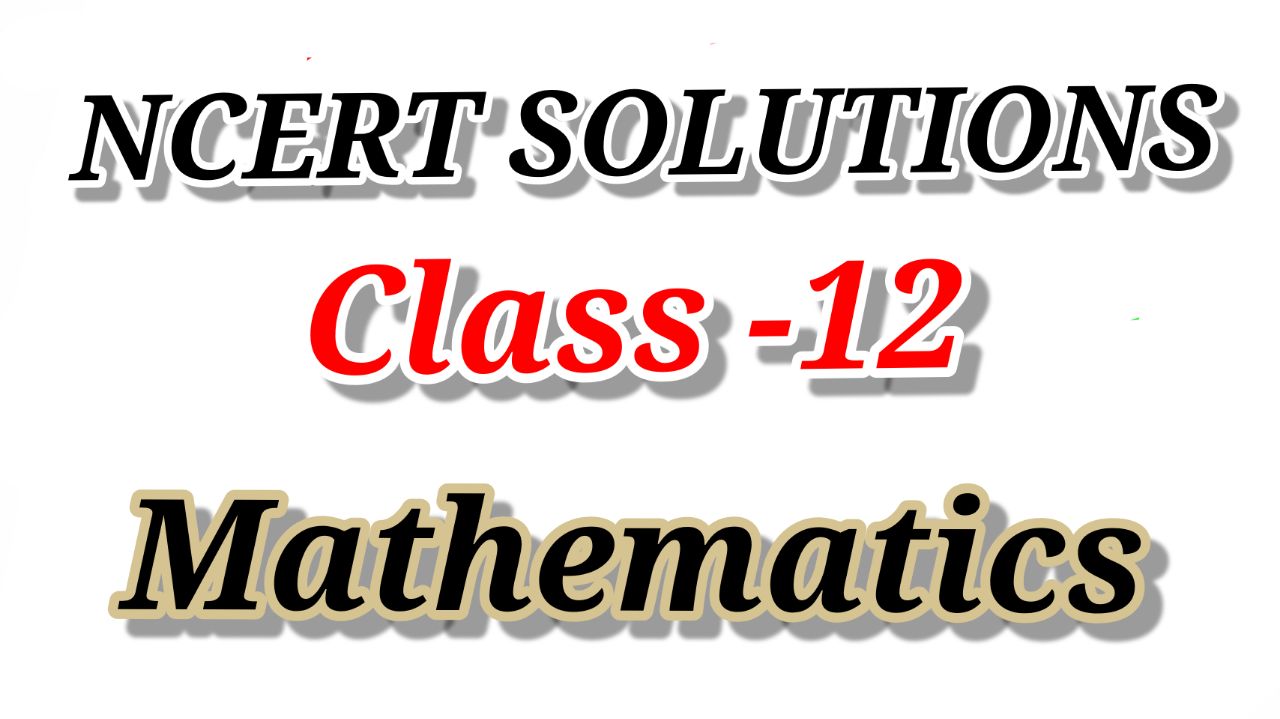
PROBABILITY EXERCISE 13.1 Question
PROBABILITY EXERCISE 13.1 Question Solution

NCERT Solutions for Class 12 Maths – Chapter 13 – PROBABILITY EXERCISE 13.1
Probability Exercises
1. Probability of Events E and F
Given:
- P(E) = 0.6
- P(F) = 0.3
- P(E ∩ F) = 0.2
(i) P(E|F) = P(E ∩ F) / P(F) = 0.2 / 0.3 = 2/3
(ii) P(F|E) = P(E ∩ F) / P(E) = 0.2 / 0.6 = 1/3
2. Conditional Probability
Given:
- P(B) = 0.5
- P(A ∩ B) = 0.32
P(A|B) = P(A ∩ B) / P(B) = 0.32 / 0.5 = 0.64
3. Probability of Events A and B
Given:
- P(A) = 0.8
- P(B) = 0.5
- P(B|A) = 0.4
(i) P(A ∩ B) = P(A) * P(B|A) = 0.8 * 0.4 = 0.32
(ii) P(A|B) = P(A ∩ B) / P(B) = 0.32 / 0.5 = 0.64
(iii) P(A ∪ B) = P(A) + P(B) - P(A ∩ B) = 0.8 + 0.5 - 0.32 = 0.98
4. Probability of Events A and B
Given:
- P(A) = 6/11
- P(B) = 5/11
- P(A ∪ B) = 7/11
(i) P(A∩B) = P(A) + P(B) - P(A ∪ B) = 6/11 + 5/11 - 7/11 = 4/11
(ii) P(A|B) = P(A ∩ B) / P(B) = (4/11) / (5/11) = 4/5
(iii) P(B|A) = P(A ∩ B) / P(A) = (4/11) / (6/11) = 2/3
5. Conditional Probability in Various Scenarios
Details for each scenario:
- E : head on third toss, F : heads on first two tosses
- E : at least two heads, F : at most two heads
- E : at most two tails, F : at least one tail
- Details for each scenario
- Details for each scenario
6. Conditional Probability in Coin Tossing
(i) E: head on third toss, F: heads on first two tosses
P (E|F) = P(E ∩ F) / P(F) = (1/8) / (1/4) = 1/2
(ii) E: at least two heads, F: at most two heads
P (E|F) = P(E ∩ F) / P(F) = [(1/8) + (3/8)] / (1/2) = 1/2
(iii) E: at most two tails, F: at least one tail
P (E|F) = P(E ∩ F) / P(F) = [(7/8) + (5/8)] / (3/4) = 4/5
7. Conditional Probability in Coin Tossing
(i) E: tail appears on one coin, F: one coin shows head
P (E|F) = P(E ∩ F) / P(F) = (1/2) / (3/4) = 2/3
(ii) E: no tail appears, F: no head appears
P (E|F) = P(E ∩ F) / P(F) = (0) / (1/4) = 0
8. Conditional Probability in Die Tossing
E: 4 appears on the third toss, F: 6 and 5 appear on first two tosses
P (E|F) = P(E ∩ F) / P(F) = (1/216) / (1/36) = 1/6
9. Conditional Probability in Family Lineup
E: son on one end, F: father in middle
P (E|F) = P(E ∩ F) / P(F) = (2/6) / (3/6) = 2/3
10. Conditional Probability in Dice Rolling
(a) Given: Black die resulted in a 5
P (sum > 9|black die = 5) = 0 (since it's not possible for the sum to be greater than 9 with a single die)
(b) Given: Red die resulted in a number less than 4
P (sum = 8|red die < 4) = 1/6 (since the only possibility is when the black die shows 2 and the red die shows 6)
11. Conditional Probability in Die Rolling
(i) E = {1,3,5}, F = {2,3}, G = {2,3,4,5}
(i) P(E|F) = P(E ∩ F) / P(F) = (1/3) / (2/6) = 1/2
P (F|E) = P(E ∩ F) / P(E) = (1/3) / (3/6) = 1/2
(ii) P(E|G) = P(E ∩ G) / P(G) = (3/4) / (4/6) = 3/4
P (G|E) = P(E ∩ G) / P(E) = (3/4) / (3/6) = 1/2
(iii) P((E ∪ F)|G) = P((E ∪ F) ∩ G) / P(G) = [(3/6) / (4/6)] = 3/4
P ((E ∩ F)|G) = P((E ∩ F) ∩ G) / P(G) = 0 / (4/6) = 0
12. Conditional Probability in Family Gender
(i) Youngest is a girl
P (both girls | youngest is a girl) = P(both girls and youngest is a girl) / P(youngest is a girl) = (1/4) / (1/2) = 1/2
(ii) At least one is a girl
P (both girls | at least one is a girl) = P(both girls and at least one is a girl) / P(at least one is a girl) = (1/4) / (3/4) = 1/3
13. Conditional Probability in Question Selection
P (Easy | Multiple Choice) = (500 + 400) / (500 + 400 + 200 + 300) = 900 / 1400 = 9/14
14. Conditional Probability in Dice Rolling
P (sum = 4 | different numbers) = P(1+3, 2+2, 3+1) / P(different numbers) = (3/36) / (30/36) = 1/10
15. Conditional Probability in Die Tossing
P (coin shows tail | at least one die shows 3) = P(coin shows tail and at least one die shows 3) / P(at least one die shows 3) = (3/6) / (3/6 + 1/6) = 3/4
In each of the Exercises 16 and 17 choose the correct answer:
16. For the first question, given that 𝑃(A) = 1/2 and 𝑃(B) = 0, we can calculate 𝑃(A|B) using the conditional probability formula: 𝑃(A|B) = 𝑃(A ∩ B) / 𝑃(B) Since 𝑃(B) = 0, 𝑃(A|B) is undefined. Therefore, the correct answer is (C) not defined.
17. For the second question, if 𝐴 and 𝐵 are events such that 𝑃(A|B) = 𝑃(B|A), it implies that the events 𝐴 and 𝐵 are independent. Therefore, the correct answer is (C) 𝐴 ∩ 𝐵 = ∅.